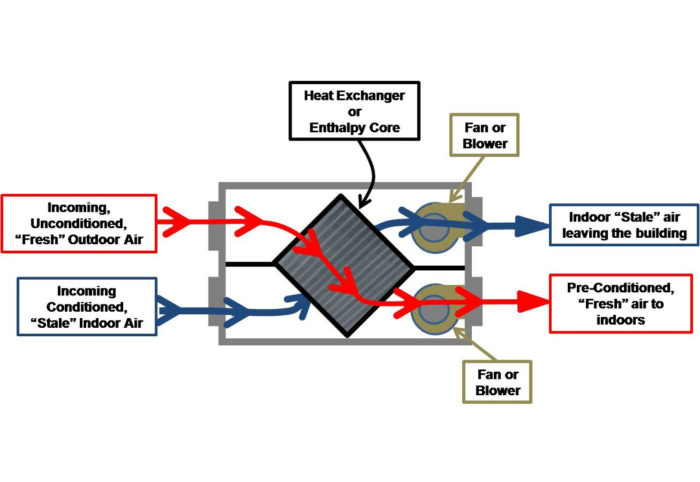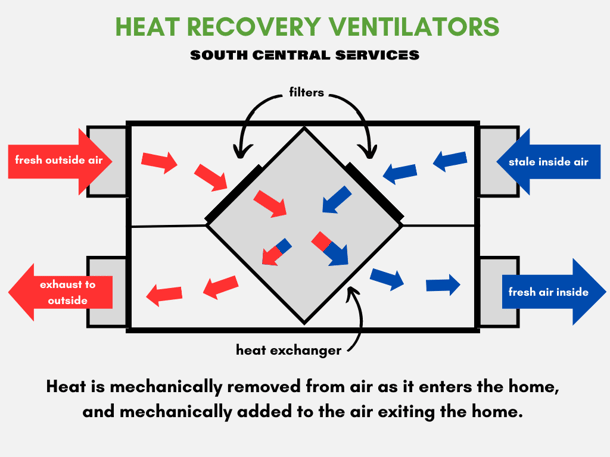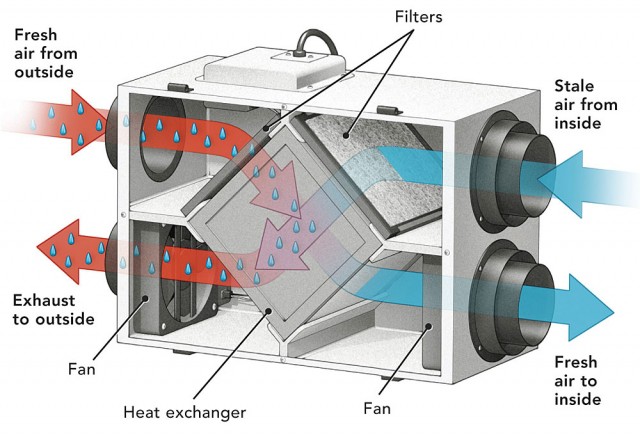Discovering the Benefits of Heat Recovery Ventilation for Power Effectiveness in Homes
Heat Recovery Ventilation (HRV) systems offer house owners a useful approach to improving energy effectiveness. By recovering warmth from outbound air, these systems can considerably reduce cooling and heating prices. Furthermore, they offer a steady supply of fresh air, boosting indoor air quality and convenience levels. As property owners take into consideration lasting choices, comprehending the nuances of HRV systems comes to be increasingly crucial. What elements should one evaluate before making such an investment?
Comprehending Heat Recovery Ventilation Equipments

Just How HRV Boosts Indoor Air High Quality

Energy Financial Savings: The Economic Benefits of HRV
Maximizing power efficiency, heat recovery ventilation (HRV) systems offer significant monetary benefits for home owners. By recovering and recycling warm from exhaust air, HRVs markedly minimize heating & cooling costs. This technology can cause power financial savings of as much as 30%, depending on climate and use patterns. Home owners commonly discover decreased energy expenses soon after installation, making HRVs a monetarily smart financial investment in time. Furthermore, many regions offer motivations or refunds for energy-efficient upgrades, even more boosting the financial appeal. As power costs remain to climb, the cost-effectiveness of HRVs comes to be increasingly clear. Generally, the incorporation of HRV systems not just advertises energy efficiency yet likewise adds to long-lasting monetary cost savings for families.
The Ecological Influence of Heat Recovery Ventilation
A significant ecological advantage of heat recovery ventilation (HRV) he has a good point systems exists in their capability to minimize total energy intake. By redeeming heat from exhaust air and transferring it to inbound fresh air, HRV systems lessen the demand for energy-intensive heating and cooling techniques. This decrease in power need adds to lower greenhouse gas emissions, as much less fossil fuel is called for to preserve comfortable interior temperature levels. Furthermore, HRV systems boost indoor air top quality by effectively exchanging stale air with fresh exterior air, minimizing dependence on mechanical cooling systems that can damage the environment. On the whole, the application of HRV systems supports sustainable living methods and lines up with global efforts to combat environment change by promoting power efficiency in residential settings.
Selecting the Right HRV System for Your Home
Exactly how can property owners ensure they choose the right heat recovery ventilation (HRV) system for their demands? First, they should analyze their home's dimension and layout, as these aspects affect airflow needs. Next, evaluating the system's effectiveness rankings is important, as greater rankings show far better performance and power cost savings. Home owners need to also take into consideration installation and maintenance prices, contrasting various brands and versions for value. In addition, it's crucial to evaluate sound degrees, as some systems operate even more quietly than others. Consulting with heating and cooling professionals can give customized referrals based on certain home conditions. Lastly, analyzing customer testimonials and guarantees can help description in making a notified decision, making sure that the chosen HRV system efficiently enhances indoor air quality and power efficiency.
Often Asked Inquiries

Exactly how Typically Should I Clean or Keep My HRV System?
The frequency of cleansing or preserving a warm recovery ventilation (HRV) system commonly depends upon usage and environmental aspects. Typically, it is advisable to perform upkeep every six months to assure peak performance and air high quality.

Can HRV Systems Help In Reducing Humidity Levels Inside?
HRV systems can effectively decrease interior moisture levels by exchanging stagnant, moist browse around these guys air with fresh, drier air from outside. HRV Heat Recovery Ventilation. This procedure helps keep a well balanced indoor setting, improving convenience and avoiding moisture-related problems
What Is the Life-span of a Common HRV System?
The life-span of a normal heat recovery ventilation (HRV) system differs, typically lasting between 10 to 15 years. Routine maintenance can prolong its effectiveness and operational life, making sure peak efficiency throughout its use period.
Are There Any Noise Worry About HRV Systems?
Noise interest in HRV systems can occur, especially from fan operation. Nevertheless, lots of modern-day devices are designed to decrease audio levels, ensuring they operate silently while maintaining performance, which addresses possible disturbances in living settings.
Can I Install an HRV System Myself, or Do I Required an Expert?
The individual contemplated whether to set up the heat recovery ventilation (HRV) system directly or hire an expert. Typically, while DIY installment is possible, expertise assurances appropriate functionality and compliance with neighborhood building regulations, improving system efficiency.